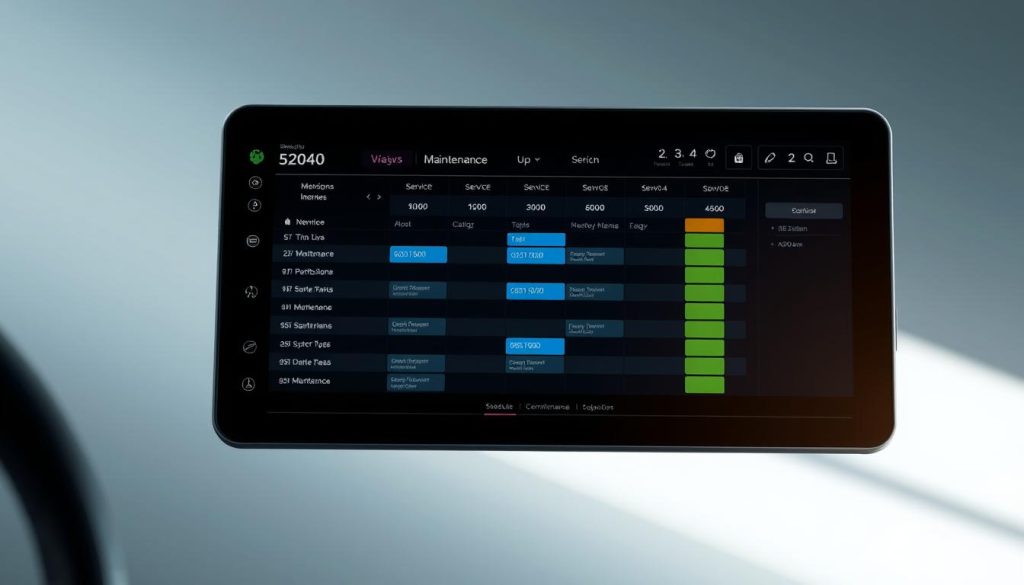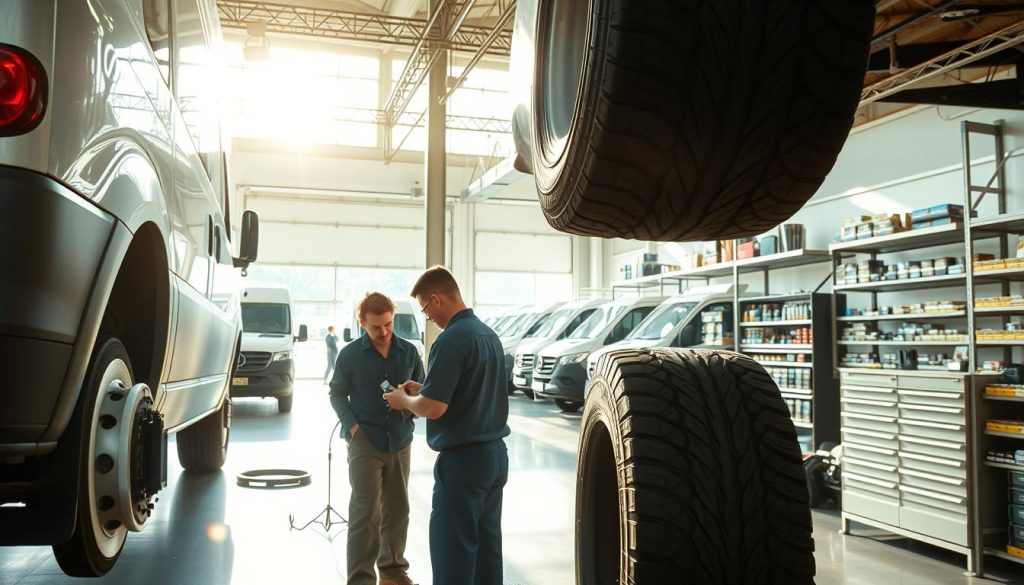5 Fleet Maintenance Tips to Prevent Costly Repairs – San Antonio | Auto Body and Paint | Collision Repair | Auto Body Repair

Running a commercial fleet is a complex task, especially with tight delivery schedules and wear and tear on heavy-duty vehicles. At Miracle Body and Paint Collision Center, we understand the importance of keeping your vehicles in top condition.
Efficient fleet maintenance is crucial for businesses in San Antonio that rely on transportation. Regular maintenance helps extend vehicle lifespan, improve fuel efficiency, and ensure safety compliance. By implementing proactive strategies, businesses can significantly reduce the risk of unexpected breakdowns and costly repairs.
Key Takeaways
- Regular maintenance extends vehicle lifespan and improves fuel efficiency.
- Proactive maintenance strategies reduce the risk of unexpected breakdowns.
- Efficient fleet management is crucial for businesses relying on transportation.
- Preventive maintenance helps ensure safety compliance and reduces costs.
- Well-maintained fleets operate more efficiently and have lower repair costs.
The Critical Importance of Fleet Maintenance for San Antonio Businesses
In San Antonio, where the climate can be particularly harsh on vehicles, fleet maintenance is not just a necessity, it’s a business imperative. Preventive maintenance helps your business extend vehicle lifespan, meet DOT compliance and safety standards, avoid delays in delivery and service schedules, maintain a professional image with clients, and boost driver satisfaction and retention.
Key benefits of regular fleet maintenance include:
- Reducing fuel consumption and lowering operational costs.
- Preventing major mechanical failures that can lead to costly repairs.
- Extending the useful life of fleet vehicles.
- Maintaining compliance with Department of Transportation regulations.
- Enhancing your business’s professional image through well-maintained vehicles.
By investing in quality fleet maintenance services in San Antonio, businesses can avoid the higher long-term costs associated with neglecting maintenance, such as premature vehicle replacement and lost business due to service interruptions.
Expert Fleet Maintenance Tips San Antonio Businesses Can Implement Today

Learn More
B&V Motor Service is your trusted partner for expert fleet maintenance in San Antonio, ensuring your vehicles remain in top condition. Our team provides professional preventive maintenance and service plans tailored to your operation.
To achieve effective fleet management, consider the following expert-recommended tips:
- Understand the specific needs of your vehicles based on their make, model, usage patterns, and San Antonio’s driving conditions.
- Implement a comprehensive preventive maintenance program to reduce unexpected repairs and vehicle downtime.
- Consider both scheduled maintenance and condition-based maintenance that responds to actual vehicle performance.
- Establish clear procedures for vehicle inspections, maintenance scheduling, and repair authorization.
- Work with experienced fleet maintenance professionals who understand commercial vehicles.
By implementing these tips, San Antonio businesses can protect their vehicle investments and maintain a reliable fleet.
Tip 1: Establish a Regular Preventive Maintenance Schedule
By implementing a comprehensive preventive maintenance schedule, you can significantly improve your fleet’s performance and longevity. A well-structured maintenance plan helps identify and address potential issues before they lead to breakdowns or costly repairs.

Key Components to Include in Your Maintenance Schedule
A comprehensive fleet maintenance schedule should include:
- Oil and filter changes
- Fluid level checks
- Brake system inspections
- Tire maintenance
- Battery testing
- Comprehensive multi-point inspections
Optimal Service Intervals for Commercial Fleets
For commercial fleets operating in San Antonio, optimal service intervals typically range from 5,000-7,000 miles for light-duty vehicles and 10,000-15,000 miles for heavy-duty trucks. However, these intervals should be adjusted based on operational conditions and manufacturer recommendations.
Implementing digital maintenance tracking systems can significantly improve compliance with scheduled maintenance by automatically generating alerts when vehicles are due for service based on mileage or time intervals.
Tip 2: Prioritize Fluid Checks and Replacements
To prevent costly repairs, prioritizing fluid checks and replacements is essential for our fleet maintenance routine. Regular oil changes and fluid checks are vital parts of fleet maintenance services. By doing so, we can help prevent issues like overheating and ensure consistent performance, especially in San Antonio’s heat.
Essential Fluids to Monitor in Fleet Vehicles
Monitoring essential fluids is critical for the longevity of our fleet vehicles. The key fluids to check include:
- Engine oil
- Transmission fluid
- Brake fluid
- Power steering fluid
- Coolant/antifreeze
- Windshield washer fluid
Each of these fluids serves a vital function in vehicle operation, and their maintenance is crucial for preventing mechanical failures.
Warning Signs of Fluid-Related Issues
Being aware of the warning signs of fluid-related issues can help us address problems before they escalate. These signs include:
- Unusual leaks under vehicles
- Burnt smells
- Difficulty shifting gears
- Hard braking
- Engine overheating
- Dashboard warning lights
Recognizing these indicators promptly can help prevent major mechanical failures and reduce maintenance repair needs.
Tip 3: Implement Comprehensive Brake and Tire Inspections
To ensure the longevity and safety of our fleet, implementing comprehensive brake and tire inspections is crucial. This involves a thorough examination of both brake and tire systems to identify potential issues before they become major problems.
Brake System Maintenance Essentials
Brake maintenance is critical for fleet safety. Regular inspections should include checking brake pads, rotors, calipers, brake lines, and fluid levels, with special attention to air brake systems in larger commercial trucks. Commercial vehicles require more frequent brake inspections due to heavier loads and demanding driving conditions.
Tire Care Strategies for Extended Lifespan
Effective tire care involves regular tire rotations every 5,000-8,000 miles, maintaining proper inflation pressures, and conducting alignment checks. Implementing a tire pressure monitoring program is particularly valuable in fluctuating temperatures, which can significantly affect tire pressure and performance.

By prioritizing both brake and tire maintenance, we can improve fleet safety, reduce repair frequency, and potentially save thousands in annual fuel costs.
Tip 4: Utilize Advanced Diagnostics and Telematics
By leveraging advanced diagnostics and telematics, we can significantly enhance our fleet’s performance and reduce maintenance costs. Advanced diagnostics and telematics systems represent the cutting edge of modern fleet management, providing real-time insights into vehicle health and performance.
Benefits of Early Problem Detection
Early problem detection through diagnostic tools allows maintenance teams to address minor issues before they escalate into major repairs or cause unexpected breakdowns that disrupt operations. This proactive approach reduces vehicle downtime and lowers overall maintenance costs.
- Reduced diagnostic time
- More accurate identification of problems
- Decreased vehicle downtime
How Telematics Improves Fleet Performance
Telematics systems capture critical data on engine performance, driving behaviors, fuel consumption, and vehicle usage patterns that can inform more effective maintenance scheduling and fleet management decisions. By integrating telematics with service management software, we can track service history, schedule preventive maintenance, and document repairs across the entire fleet.
Tip 5: Train Drivers on Proper Vehicle Operation and Reporting
Driver training is a critical aspect of fleet maintenance that is often overlooked. By educating our drivers on proper vehicle operation and reporting, we can significantly reduce the frequency of repairs and maintain our fleet’s reliability.
Driver Education for Vehicle Longevity
Proper vehicle operation education should cover driving techniques that minimize wear and tear, such as smooth acceleration and braking, proper shifting, and avoiding excessive idling. By teaching our drivers these best practices, we can extend the lifespan of our vehicles and reduce maintenance costs.
Implementing Effective Vehicle Inspection Reports
Implementing a formal vehicle inspection reporting system enables our drivers to serve as the first line of defense in identifying maintenance issues before they become serious problems. Effective driver reporting processes should include daily pre-trip and post-trip inspections with standardized checklists that prompt drivers to check critical components and systems.
Trust Your Fleet to San Antonio’s Collision Repair Experts
For San Antonio businesses, a well-maintained fleet is key to avoiding unnecessary expenses. By implementing the five maintenance tips outlined in this guide, you can significantly reduce your risk of costly repairs and vehicle downtime.
However, accidents can still happen. When they do, Miracle Body and Paint Collision Center is here to help. Our team specializes in fleet services and collision repair for San Antonio businesses, with technicians trained to handle commercial vehicle repairs efficiently.
Trust us with your fleet vehicle repairs at either of our two convenient San Antonio locations: North West San Antonio – Leon Valley at (210)680-1987 or North East San Antonio at (210)858-3630.
FAQ
How often should we perform preventive vehicle inspections?
We recommend performing inspections every 5,000 to 10,000 miles, depending on the vehicle’s manufacturer recommendations and our service intervals.
What are the benefits of using telematics in our commercial vehicles?
By utilizing advanced diagnostics and telematics, we can detect potential issues early, reduce downtime, and improve overall performance.
How can we minimize the risk of costly repairs?
By establishing a regular preventive maintenance schedule, prioritizing fluid checks, and implementing comprehensive brake and tire inspections, we can significantly reduce the risk of unexpected breakdowns.
What are the most critical fluids to monitor in our vehicles?
We should monitor engine oil, coolant, brake fluid, and transmission fluid levels regularly to prevent damage and ensure optimal vehicle performance.
How can we extend the lifespan of our tires?
By implementing proper tire care strategies, such as regular tire rotations and inspections, we can extend the lifespan of our tires and improve overall vehicle safety.
Why is driver education important for vehicle longevity?
Educating our drivers on proper vehicle operation and reporting procedures can help prevent accidents, reduce wear and tear, and promote a culture of safety within our organization.



